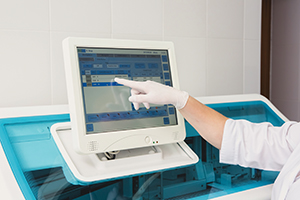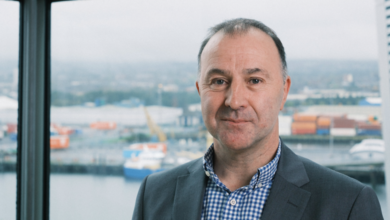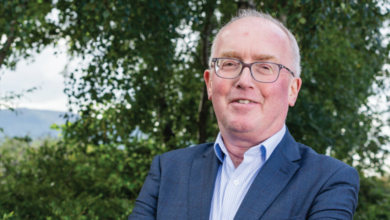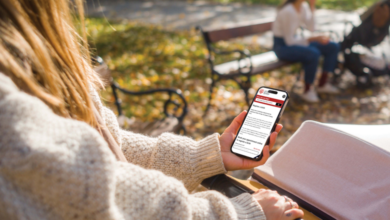eHealth: Joining up people and services
Director for eHealth and External Collaboration for Northern Ireland
Sean Donaghy addressed the recent Digital Government Conference in Belfast.
 When describing the purpose of eHealth, Sean Donaghy stressed: “It is not about technology; it’s about joining people up.” He outlined how the health system in Northern Ireland was working towards sharing information and increasing connectivity. “Like many others we are struggling with how to better use our data. There are particular issues around health and social care and sensitivity around that information that requires a public dimension to the conversation,” he said.
When describing the purpose of eHealth, Sean Donaghy stressed: “It is not about technology; it’s about joining people up.” He outlined how the health system in Northern Ireland was working towards sharing information and increasing connectivity. “Like many others we are struggling with how to better use our data. There are particular issues around health and social care and sensitivity around that information that requires a public dimension to the conversation,” he said.
Donaghy highlighted the need to modernise eHealth and care infrastructure. Good governance needs to be established whilst fostering innovation. Outlining the current work towards using technology as a transformation tool, Donaghy highlighted the success of the electronic care record. Uptake levels for the system have been high, moving the system away from paper and creating more efficiency. Looking ahead, the creation of a patient portal is the next step. Patients will get direct access to the information they need online.
“As we debate the future, the electronic care record has been fantastic, but we’re not sure it’s enough. It’s a lot better from where we have come from – people drowning in paper and multiple fragmented systems. The electronic care record has joined that together for us.” However, there are still over 250 independent systems delivering care with many challenges in linking them together.
Donaghy stressed the need to “move away from those 250 systems and bearing down on that number heavily to come up with fewer systems built around an integrated system.” The integrated system could allow people to engage in personalised self-care. He used an example of a non-complex case for a straight forward procedure where a questionnaire could be sent to the patient in their home to fill out before arriving on the day of the operation. It also can enable staff to deliver best practice, reduce care variation and drive quality and safety. Communications infrastructure within the health sector also needs to improve. There is an opportunity to improve population health and wellbeing through insight and targeted action. Integrated care will be more expensive, but Donaghy believes that it will be worth it in the long-term.
The legacy of many different health organisations has presented a challenge. Investment in reform will be long-term and there is a need to get things right the first time for staff and patients. He adds: “There is a tension between doing things once but still getting innovation coming through.” In terms of analytics, it is a long and slow process but an important one in order for staff and patients to have confidence. He points to the negative experience in the UK which lost public confidence in the system.
Recent successes include paper light GPs and digital clinical imaging workflow. Half of GP surgeries currently offer online access to repeat prescriptions and appointments. Care noting and hospital flow systems have been digitised.
Looking to the future, Donaghy observed: “Northern Ireland solutions can work for our 700,000 staff and for the people of Northern Ireland. The future has to be a paperless HSC. You can’t share a piece of paper at least not without a great deal of trouble. It’s not about scanning that piece of paper either, it is about work flow solutions, supporting people to work differently and to share that information.”
He concluded: “Once4NI sits alongside affordability on one hand and capability on the other. We don’t have the capability to do this five or six times across Northern Ireland. We need to pool our resources and do it effectively once. That leaves us with the innovation challenge, how do you match that? How do you match getting fresh ideas through? Which is why I talked about good governance and strong leadership to get a steady flow of new ideas to feed into best practice.”





